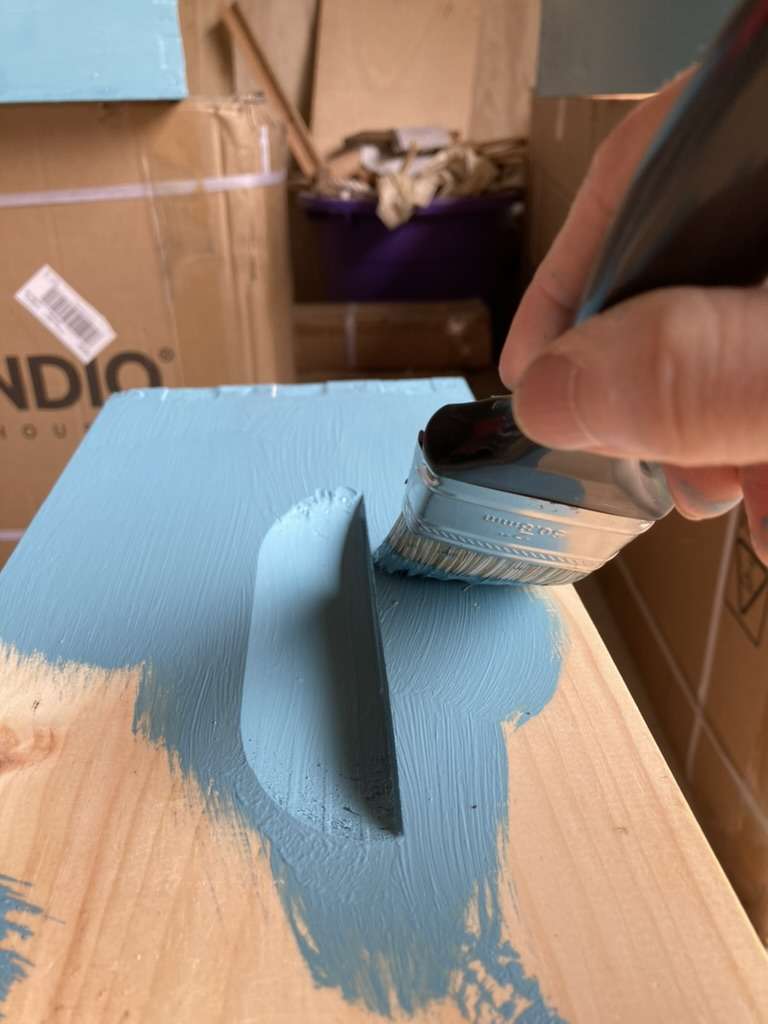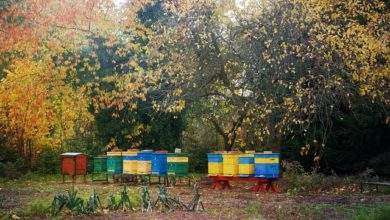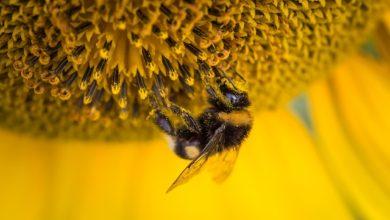Hive Maintenance and Repair

Beekeeping is an ancient practice that has been around for thousands of years. It involves the cultivation of bees for their honey, which has been used for food and medicine for centuries.
Beekeeping is not only rewarding but also beneficial for the environment, as bees play a crucial role in pollinating plants. To ensure that your bees remain healthy and productive, it’s important to learn how to maintain and repair your hive. In this article, we’ll discuss some essential tasks you need to perform to keep your hive in top shape.
Why Hive Maintenance and Repair are Essential
Beekeeping can be a rewarding hobby or even a lucrative business, but it requires diligent maintenance and repair of hives. Hive maintenance involves regular cleaning, inspecting for damage or disease, and ensuring bees have access to food and water. Repairing or replacing damaged equipment is also necessary to keep your bee colony healthy and productive.
Why Is Hive Maintenance Important?
Regular hive maintenance is critical for the health and well-being of your bees. The cleanliness of the hive directly affects the level of honey production, as bees need a clean environment to thrive and produce honey. A dirty hive can also attract pests and parasites that can harm your colony, such as mites, wax moths, and ants.
Inspecting your hives regularly can help you spot any signs of disease or infection early on before they spread. Common issues that require attention include brood diseases, nosema, and foulbrood. Regular cleaning and replacement of frames or comb that has been contaminated with disease can help prevent the spread of disease throughout the colony.
Hive repairs are also important to maintain the structural integrity of the hive. Over time, hives can become damaged, and broken or cracked equipment can increase the risk of pests and predators invading the colony. Ensuring hives are structurally sound and free from any damage can help prevent the risk of a colony collapse.
When to Perform Hive Maintenance
Performing regular hive maintenance is essential for maintaining the health of your bees. However, the timing of when you perform maintenance can affect the health and productivity of your colony.
The best time to perform hive maintenance is during the non-honey producing season, typically during early spring or late fall. This ensures the bees are not disturbed during the period of peak honey production.
During peak honey production, bees are working hard to collect nectar and pollen, and disturbing the hive can disrupt their productivity. However, regular inspections and monitoring of your bees throughout the season can still be beneficial.
Beehive Maintenance Tasks
There are a few essential tasks that you need to perform to maintain your beehive. These tasks include the following:
As a beekeeper, you’re invested in the well-being of your honeybees. You know that a healthy and productive hive means a bountiful harvest of honey and wax. But in order to maintain the health and productivity of your hive, you need to perform regular maintenance tasks. In this chapter, we’ll cover the essential beekeeping maintenance tasks that you should carry out regularly.
Inspection

Inspection is critical to the health of your hive. Regular inspections (every 7-10 days during the active season) allow you to check for signs of disease, pests, and other problems. They also give you a chance to monitor the strength and productivity of your colony.
When inspecting your hive, take note of the following:
- The number and health of your bees
- The amount of brood (eggs, larvae, and sealed pupa)
- The amount of stored pollen and honey
- The general cleanliness and organization of the hive
If you notice anything unusual during your inspection, take action immediately. There are many diseases and pests that can afflict your bees, and quick intervention is essential to prevent them from spreading.
Feeding
Bees need to consume a lot of high-quality food in order to maintain their energy and productivity. In addition to foraging for nectar and pollen, you may need to supplement their diet with a sugar syrup during periods of low nectar flow. This is particularly important during the early spring when the bees are beginning to build up their populations.
You can prepare a sugar syrup by dissolving one part granulated sugar in one part water. You can also add a few drops of essential oils (such as lemongrass or thyme) to the syrup to help stimulate the bees.
It’s also important to keep your bees hydrated. You can provide water by setting up a shallow dish or birdbath near your hive.
Cleaning
A clean hive is a healthy hive. Regular cleaning will help prevent the buildup of debris and waste products that can attract pests and disease. Here are some cleaning tasks you should perform:
- Clean out the bottom board (the tray that slides out from beneath the hive) every few weeks
- Replace old and dirty comb with new comb every few years
- Sterilize equipment with a solution of bleach and water (one part bleach to nine parts water) between uses
Requeening
The queen bee is the most important member of your hive. She’s responsible for laying the eggs that will produce the next generation of bees. But over time, a queen’s productivity will decline, and you may need to replace her.
You should plan to requeen your hive every two to three years. Look for signs that your queen is getting old, such as a decline in egg-laying or a reduction in the number of bees in the hive. You can purchase a new queen from a reputable breeder or supplier.
Swarm Management
Swarming is a natural part of the bee life cycle, but it can be disruptive to your hive and your neighbors. To manage swarming, you should:
- Monitor for signs that your hive is getting too crowded (such as bees hanging out on the outside of the hive)
- Add supers (additional boxes) to give your bees more space
- Consider splitting your hive to form a new colony
By taking these beekeeping maintenance tasks seriously, you’ll be able to ensure the success and productivity of your hive. Remember to inspect your hive regularly, feed your bees when necessary, keep your hive clean, requeen as needed, and manage swarming appropriately.
Beehive Repair Tasks
Repairing your beehive is essential to maintain a safe and secure environment for your bees.
Here are a few beehive repair tasks that are common:
Fixing Cracks and Hammering Loose Nails
One of the most common repairs beekeepers will need to make is fixing cracks and hammering loose nails. Bees can create cracks in hives, and over time, these cracks can expand, posing a significant threat to the hive’s safety. To fix cracks, beekeepers need to inspect the hive thoroughly and identify any potential cracks.
Once beekeepers find the cracks, they should apply a suitable sealant or glue and then allow the hive to dry completely. Hammering loose nails is another critical repair task that beekeepers must undertake to ensure that the hive remains sturdy.
Replacing Frames
Another essential beehive repair task is replacing frames. Beekeepers must regularly replace old frames with new ones to ensure the hive’s health and safety. The frames in a beehive provide support for the honeycomb, which is crucial to a hive’s structure. Old and worn-out frames can lead to colony stress, eventually causing the colony to fail. Therefore, replacing frames is a necessary task that beekeepers should not overlook.
Replacing Comb
The honeycomb in a beehive is one of the most vital components, serving as the breeding ground for new bees and the storage area for the colony’s food supply. Over time, this delicate honeycomb can become damaged, leaving it useless for the colony. Replacing honeycomb is a skilled repair task that beekeepers need to undertake to alleviate any detrimental effects on the hive. Beekeepers should replace any damaged honeycomb and remove any excess or unwanted wax from the hive.
Fixing Bottom Boards
Finally, beekeepers must undertake a repair task that is often overlooked: fixing bottom boards. The bottom board is the foundation of a beehive, providing support and stability for the entire hive. If a bottom board becomes damaged or worn out, the entire hive’s foundation can become compromised. Beekeepers must inspect the entire hive, look for any damaged areas in the bottom board, and fix any issues as soon as possible.
Conclusion
Beekeeping is a rewarding activity that requires regular maintenance and repair to ensure the health and productivity of your bees. By following the essential tasks listed in this article, you can maintain and repair your beehive with ease. Remember to inspect your hive regularly, provide a consistent source of nutrition, and manage any issues that arise promptly. With proper maintenance and repair, your beehive will remain healthy and productive for years to come.
FAQ
What does bee hive maintenance and repair entail?
- Bee hive maintenance and repair includes regular inspections and upkeep to ensure the health and productivity of your bee colony. This includes replacing damaged or worn-out equipment, checking for signs of disease, and maintaining a clean and organized hive.
How often should I perform bee hive maintenance?
- It is recommended to perform regular bee hive maintenance at least every 1-2 weeks during the active beekeeping season. However, the frequency may also depend on factors such as weather conditions, the size of your colony, and your location.

How important is bee hive maintenance?
- Regular bee hive maintenance is crucial for ensuring the health and productivity of your bee colony. Neglecting maintenance can lead to a decline in honey production, the spread of diseases, and even the death of your bees.
What are the most common issues faced in bee hive maintenance?
- The most common issues faced in bee hive maintenance include preventing hive infestations, managing honey production, preventing disease outbreaks, and routine cleaning and equipment maintenance.
When should I repair or replace my beekeeping equipment?
- Beekeeping equipment should be replaced when it starts to show signs of wear and tear or any damage. Examples of damaged equipment include broken frames, damaged hive boxes, or any other equipment that cannot function effectively.
How do I prevent pests from damaging my hive?
- To prevent pests such as ants, rodents, and mites from invading your hive, ensure you have a screened bottom board and use barriers such as metal mesh to prevent intrusions. Additionally, regularly clean and inspect your hive for any weaknesses or damage that could leave your bees vulnerable to pests.
How often should I inspect my hive for disease?
- You should inspect your hive for diseases every 2-3 weeks during the active beekeeping season. Be on the lookout for signs of diseased or dead bees, abnormal brood patterns, and any other indications of illness.
How do I prevent the spread of disease in my hive?
- To prevent the spread of disease in your hive, regularly clean and sterilize your equipment and clothing, use proper beekeeping techniques, and isolate any sick or infected bees to prevent further spread of illness.
Can hive maintenance help increase my honey production?
- Yes, regular bee hive maintenance can help increase honey production by ensuring the overall health and productivity of your bee colony. A healthy hive will be able to produce more honey than a sick or diseased hive.
How do I know if my bee colony is healthy?
- A healthy bee colony should have a strong population, an active and visible queen, and an overall calm and peaceful demeanor. Additionally, the hive should smell sweet and fresh, and the honeycomb should appear clean and regular in structure. Any signs of disease or infestation should be investigated and treated immediately.




